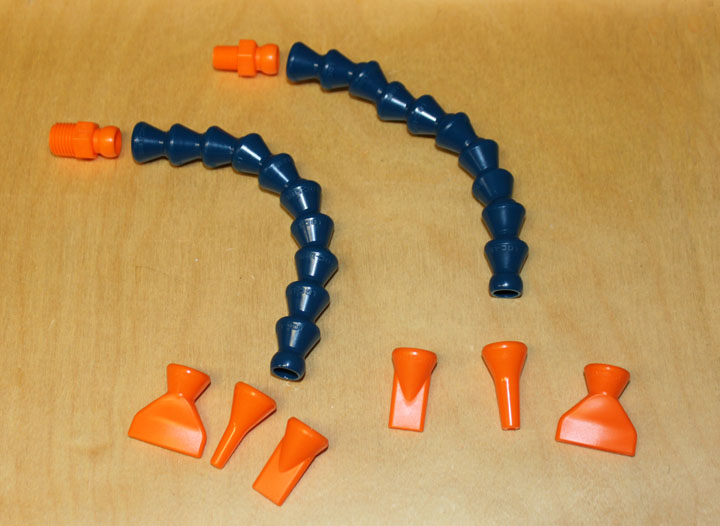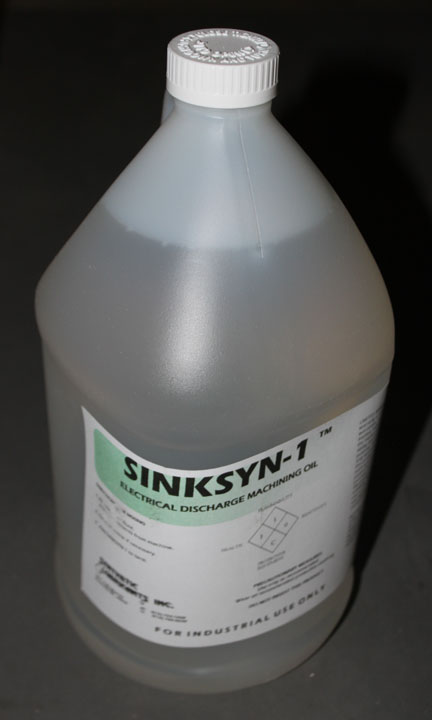|
Home
Power System
Electrolyte System
Gap System
Cutting Metal
Sources
|

Fig 1
The electrolyte system consists of a cutting tank, a pump, a filter, a flush nozzle, an electrolyte reservoir, and the connecting plumbing. After searching for some time, the pump above still fits the bill at the lowest price - its a Dayton 2HNN9 submersible pump with an 18 foot head and Viton seals that will endure the electrolyte. The screened intake is under the unit, and the output is the the threaded pipe fitting above. (I do not like pipe fittings!)

Fig 2
Above is a kit of parts of Line-Loc brand flexible tubing. The top left parts are threaded fitting adapters. These, as well as the nozzles just snap into place and will be used to direct the flow of electrolyte to the electrode gap, keeping it flushed from debris.

Fig. 3
At the 2011 workshop, Ben Fleming told me a well-filtered electrolyte flush can make a poor EDM sparker look good, and conversely great spark system with a poorly filtered electrolyte will produce poor results, so it pays to keep the flush clean and flowing. Above shows the filter set-up. Its a Derale 25005 "remote filter mount" that accepts a regular automotive Fram PH16 type oil filter, of which you can buy in different levels of filtration at Walmart. The inlet and outlet on the left of the mount are 3/8 MPT pipe threads (Did I mention I don't like pipe threads?) With the price of metals today, its best to get to PVC quickly, so I ended up getting 2 brass 3/8" MPT nipples with 2 3/8 MPT to 1/2 MPT adapters, which accommodate a 1/2 MPT to 1/2 PVC glue fitting. This assembly will be mounted on the side of the tank for easy access to the filter.

Fig. 4
Above is the fiberglass pan I will be using as a cutting tank. It is from U.S. Plastic Corp, and is a "#049226 22x14x8 tote pan gray." Fiberglass is good because it will stand up to the electrolyte and allow other things to be epoxied on to it. I ordered one wider than square to allow for the filter and pump to one side. It will also get a bed for the workpiece and a drain to the electrolyte reservoir.

Fig. 5
Figure 5 simply shows a one gallon jug of the electrolyte solution I am using from McMaster-Carr. It is relatively clear.
|